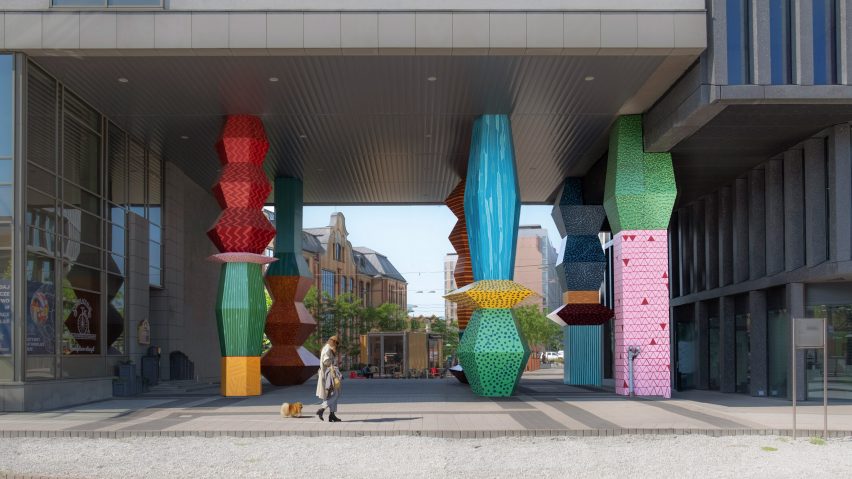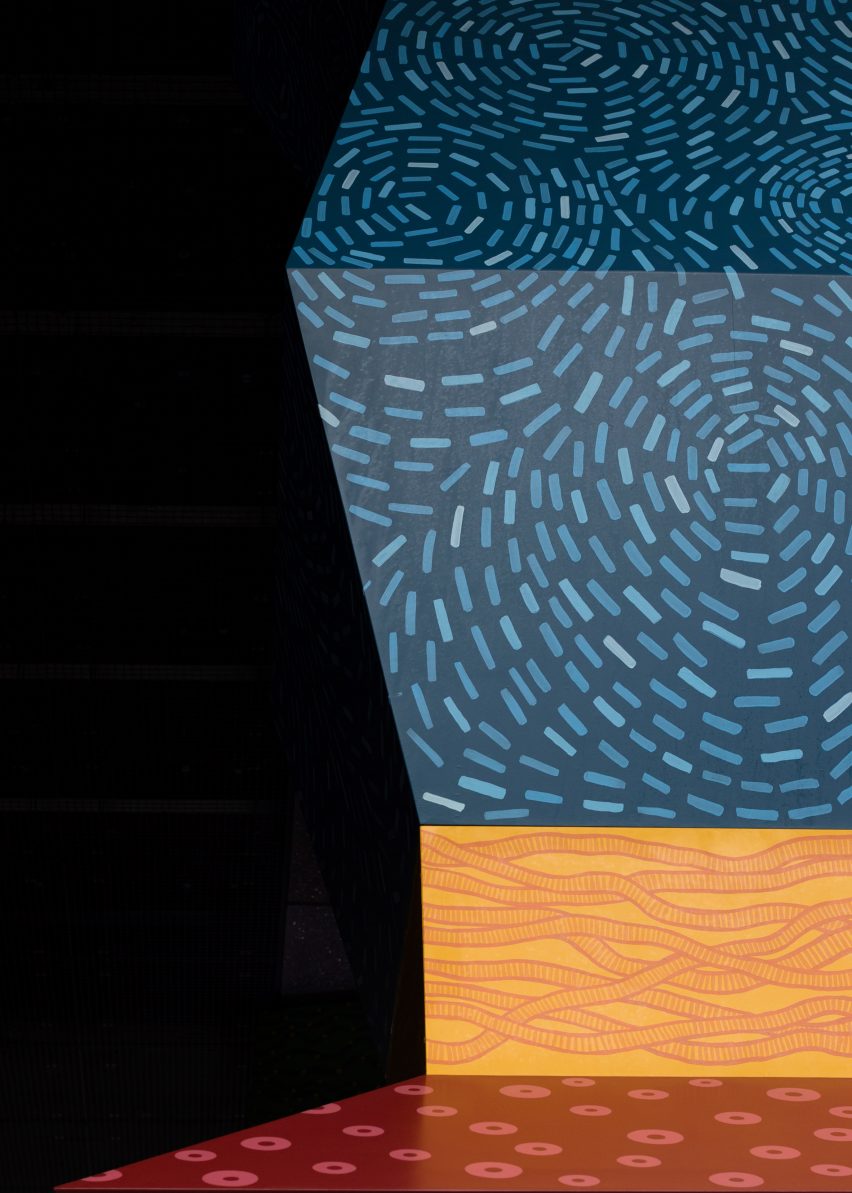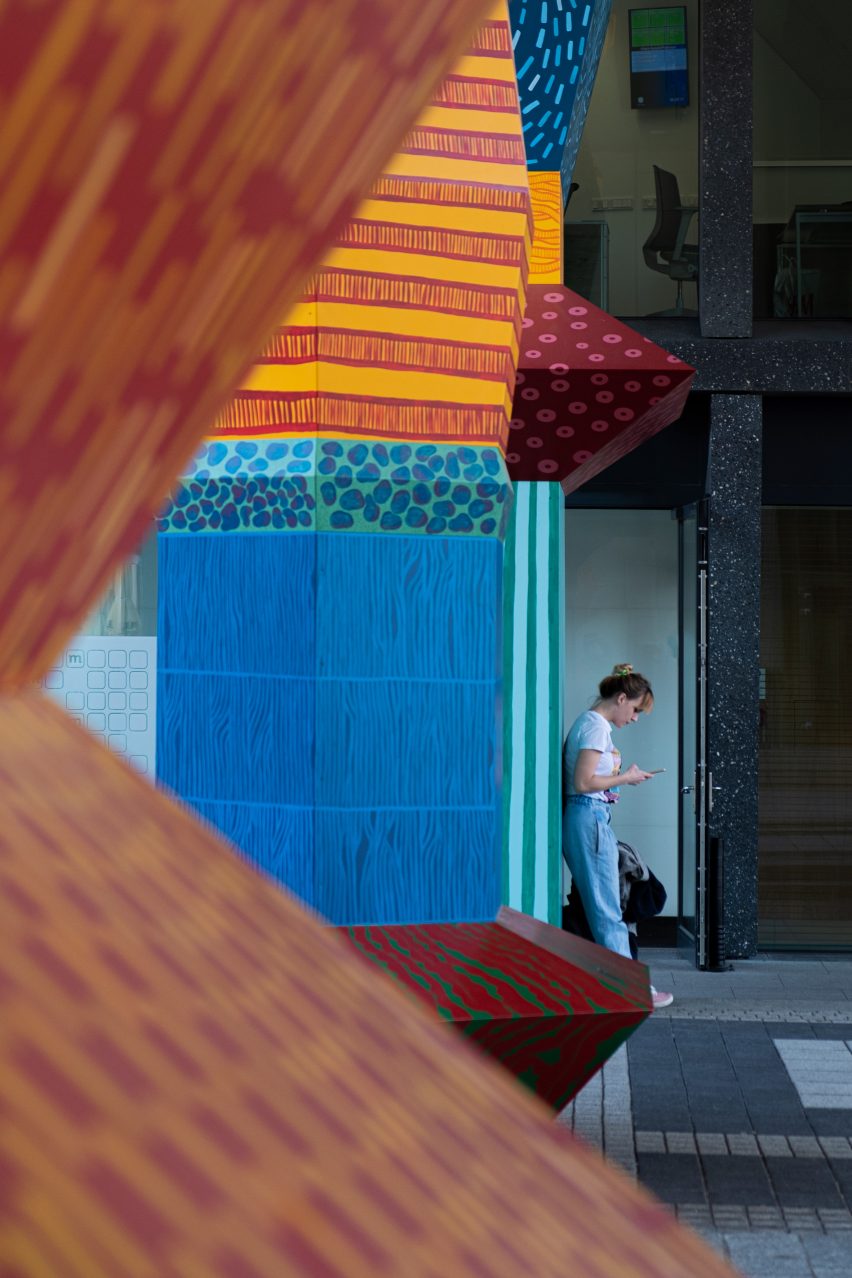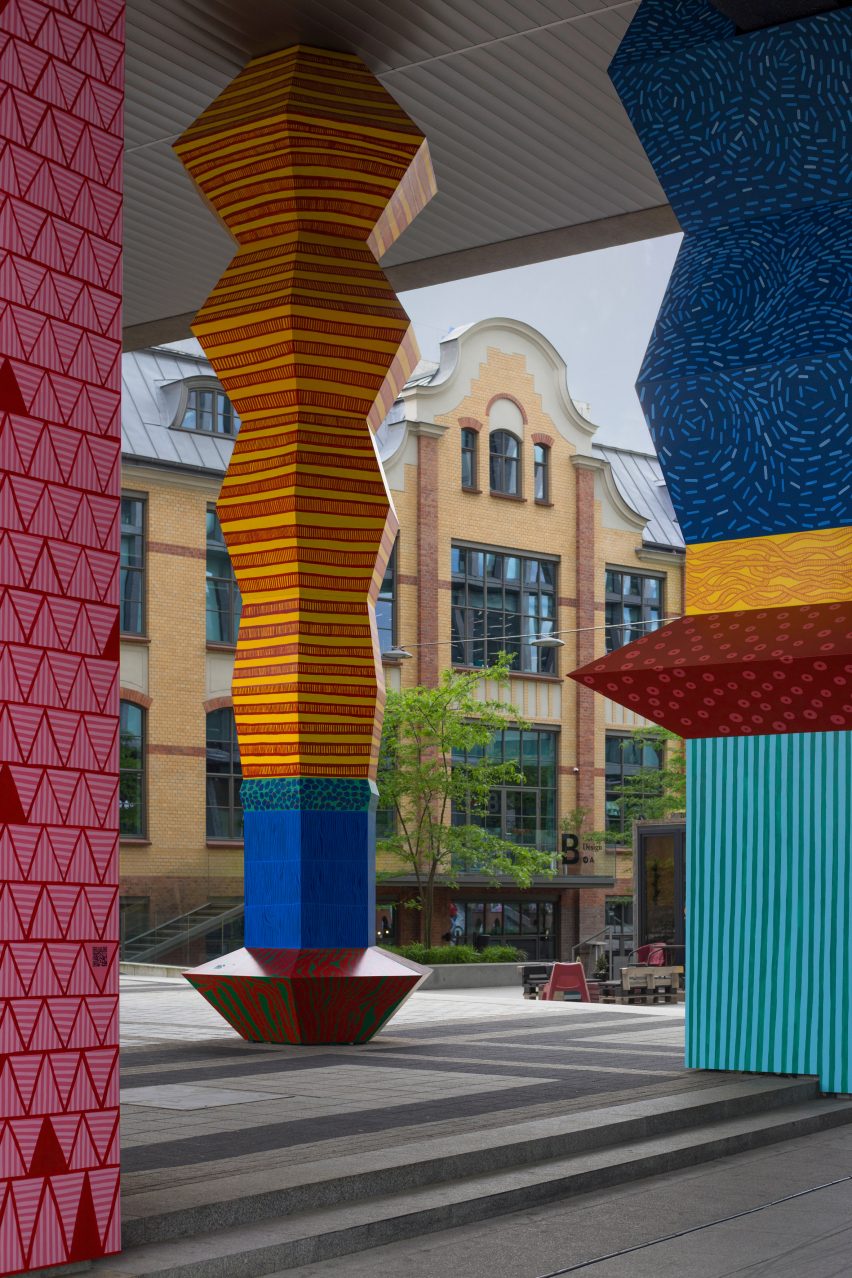Climate-change data turned into colourful towering totems
Designer Alicja Biała and architect Iwo Borkowicz have aimed to capture the realities of climate change with these colourful Totemy towers that serve as multi-storey data visualisations.
Installed beneath MVRDV's Bałtyk tower in Poznań, Poland, each of the six Totemy sculptures is a nine-metre-tall, geometric wooden tower.

Each of the totems has been designed to communicates a statistic about an environmental issue. For instance, one totem illustrates what has happened to every piece of plastic produced throughout history.
The sculpture is dominated by its blue top half, carved into bold geometric shapes and faintly patterned with swirls. This represents all the plastic that has been discarded as waste.

Below it, slimmer sections in different colours show the fates of the remaining plastic. Green shows it is still in use; red, that it has been burnt. The slimmest section, a mere belt of yellow, represents plastic that has been recycled.
Viewers can access these explanations — as well as links to the statistics' sources — by scanning a QR code on each sculpture.

Biała said she hopes the installation, which will remain at the site permanently, will help to inject climate change into people's conversation.
"We wanted to address the public at large, and at an everyday level," she said. "Passersby on the street and tram will catch out of the corner of their eye a flash of strong colours and be reminded of the current state of our world."

She has been buoyed by the positive response, both locally and abroad, since Totemy opened on 16 May.
"This is particularly important within the state of discourse in Poland where many politicians and public figures manifest climate ignorance, like Polish President Andrzej Duda, who has a rich climate change denial history," said Biała.
"The thing is that our totems are designed to represent science; you may discuss with me, but you cannot argue with facts."

Besides the plastic pollution Totemy sculpture, there is another dedicated to air pollution, one showing how much water goes into farming beef versus vegetables, one exploring over exploited fisheries and one that concentrates on wild animal populations.
Biała and Borkowicz chose statistics that would speak to Polish audience specifically. One Totemy sculpture shows the amount of annual global deforestation versus the total area of Poland — resulting in two sections of nearly equal size.

Biała, who is a visual artist as well as a designer, handmade all the sculptures with help from local woodworkers. She said her workshop was open to the community throughout the process, and every Saturday they would host a discussion and show documentaries in the space.
Biała is currently studying at the Royal College of Art in London, having graduated from Denmark's Via University College and The Copenhagen School of Design and Technology.
Her collaborator, Borkowicz, is an architect specialising in sustainable development, and won the 2016 Young Talent Architecture Award for his graduate project at the University of Leuven in Belgium.
Photography is by Alicja Biała, Iwo Borkowicz and Dominik Pazdzior.